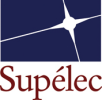Low-frequency scattering from perfectly conducting spheroidal bodies in a conductive medium with magnetic dipole excitation
Résumé
Inductive electromagnetic means that are currently employed in the exploration of the Earth's subsurface and embedded voluminous bodies often call for an intensive use, primary at the modeling stage and later on at the inversion stage, of analytically demanding tools of field calculation. Under the aim of modeling implementation, this contribution is concerned with some interesting aspects of the low-frequency interaction of arbitrarily orientated (i.e. three-dimensional) time-harmonic magnetic dipoles, with 3-D perfectly conducting spheroidal bodies embedded in an otherwise homogeneous conductive medium. For many practical applications involving buried obstacles such as Earth's subsurface electromagnetic probing at low-frequency or any other physical cases (e.g. geoelectromagnetics), non-axisymmetric spheroidal geometry approximates sufficiently such kind of metallic shapes. On the other hand, our analytical approach deals with prolate spheroids, since the corresponding results for the oblate spheroidal geometry can be readily obtained through a simple transformation. The particular physical model concerns a solid impenetrable (metallic) body under a magnetic dipole excitation, where the scattering boundary value problem is attacked via rigorous low-frequency expansions for the incident, scattered and total electric and magnetic fields in terms of positive integral powers of (ik), that is (ik) to the power n for n ≥ 0, where k stands for the complex wavenumber of the exterior medium. The purpose of the modeling is to contribute to a simple yet versatile tool to infer information on an unknown body from measurements of the three-component electric and magnetic fields nearby. Our goal is to obtain the most important terms of the low-frequency expansions of the electromagnetic fields, that is the static (for n = 0) and the dynamic (n = 1, 2, 3) terms. In particular, for n = 1 there are no incident fields and thus no scattered ones, while for n = 0 the Rayleigh electromagnetic expression is easily obtained in terms of infinite series. Emphasis is given on the calculation of the next two non-trivial terms (at n = 2 and at n = 3) of the aforementioned fields. Consequently, those are found in closed form from exact solutions of coupled (at n = 2, to the one at n = 0) or uncoupled (at n = 3) Laplace equations and they are given in compact fashion, as infinite series expansions for n = 2 or finite forms for n = 3. Nevertheless, the difficulty of the Poisson's equation that has to be solved for n = 2 is presented, whereas our analytical approach demands the use of the well-known cut-off method in order to obtain an analytical closed solution. Finally, this research adds useful reference results to the already ample library of scattering by simple shapes using analytical methods.
Origine : Fichiers produits par l'(les) auteur(s)

